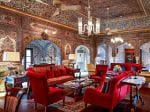The steps of time : How ancient stepwells are inspiring modern structures and design
From educational institutions and resorts to rugs and art, baoris are having a moment of revival
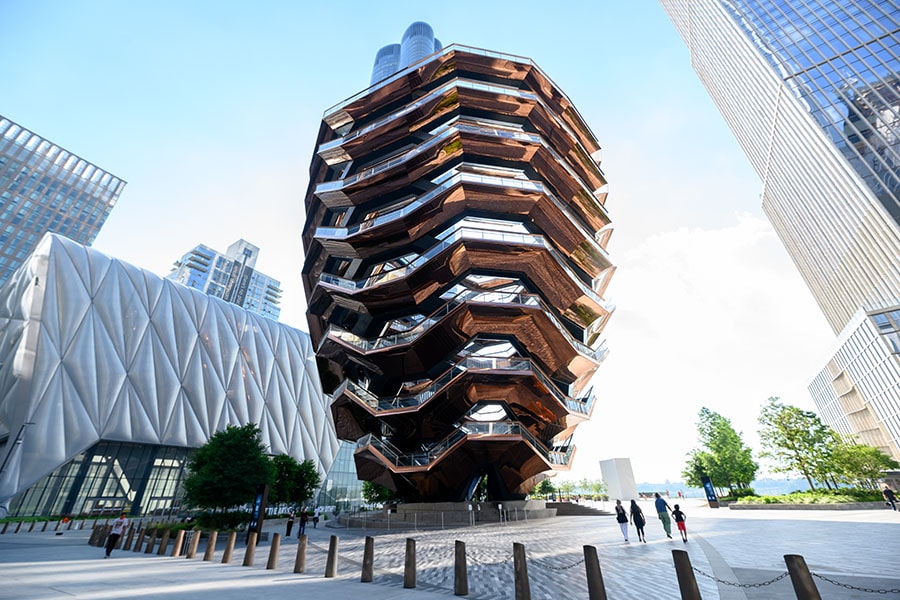 British designer Thomas Heatherwick's Vessel, a $150-million monument in New York's Hudson Yards, also took inspiration from ancient Indian stepwells.
Image: Noam Galai/Getty Images
British designer Thomas Heatherwick's Vessel, a $150-million monument in New York's Hudson Yards, also took inspiration from ancient Indian stepwells.
Image: Noam Galai/Getty Images
It was the early 1990s when architects Sangeeta Merchant and Sanjeev Panjabi of Spasm Design came across the kunda in Modhera in Gujarat on a weekend trip. The two were then students of Rachana Sansad Academy of Architecture in Mumbai and though the reservoir is not as illustrious as its other counterparts, it was enough to make them vow, “that if we ever get a chance to work on a college, institution, or a cultural building, we would use this typology. But in a way that is modern, while respecting our traditions and culture,” Merchant says.
From a minimalistic utilitarian character during the Indus Valley Civilisation to post-seventh-century plunging ornate structures that still elicit awe, stepwells have always been a part of Indian architectural consciousness. And right now they seem to be having a revival moment, not just in architecture but also in design and art.
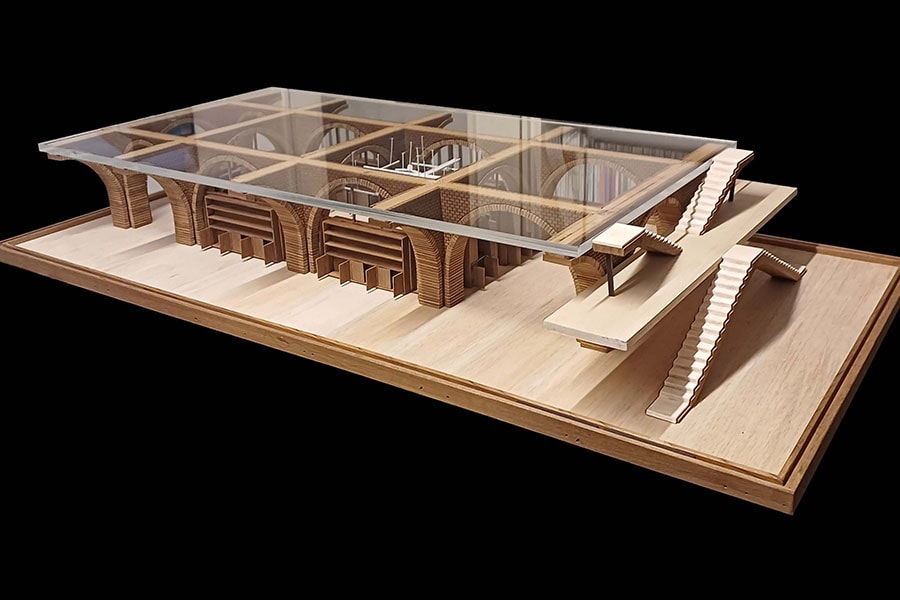 The Sanskriti Vihara building at the KJ Somaiya Educational Trust campus in Mumbai is architect duo Sangeeta Merchant and Sanjeev Panjabi's ode to the Indian stepwells.
Image: Spasm Design Architects.
The Sanskriti Vihara building at the KJ Somaiya Educational Trust campus in Mumbai is architect duo Sangeeta Merchant and Sanjeev Panjabi's ode to the Indian stepwells.
Image: Spasm Design Architects.Ancient wisdom, modern leisure
Amid the neutral and monochromatic canvas of Bookmark Resort Jogi Mahal in Ranthambore, that started operations in January 2024, the wall near the swimming pool provides a dreamy backdrop. The wall, inspired from Abhaneri’s Chand Baori in Rajasthan, one of the most famous, deepest, largest, and oldest stepwells in India, not only displays a fine game of shadows with every passing moment but also brings guests together in the evenings by becoming a stage for folk artists. The poolside wall at Bookmark Resort Jogi Mahal, Ranthambore, adds a lot of character to the area.
Image: Garima Verma
The poolside wall at Bookmark Resort Jogi Mahal, Ranthambore, adds a lot of character to the area.
Image: Garima Verma“These architectural marvels not only served practical purposes but also held cultural and social significance within communities,” says Ashish Vohra, founder and CEO, Onora Hospitality Pvt. Ltd. “The concept of incorporating the stepwell design near the swimming pool originated from the idea of infusing the resort with a sense of local culture, history, and paying homage to this traditional architectural form, while also providing a unique and visually striking feature. The design not only adds depth and character to the pool area but also evokes a sense of tranquillity and serenity. It creates a charming collocation between ancient wisdom and modern leisure,” Vohra adds.
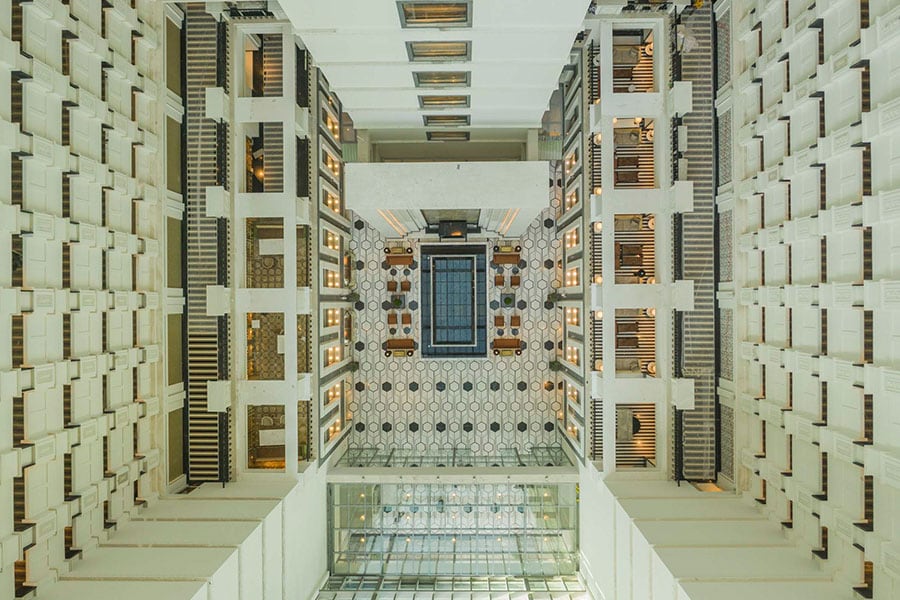 The impressive lobby at ITC Narmada, Ahmedabad. The floors are in an inclined elevation, just like the Adalaj stepwell near Gandhinagar.
Image: ITC Narmada
The impressive lobby at ITC Narmada, Ahmedabad. The floors are in an inclined elevation, just like the Adalaj stepwell near Gandhinagar.
Image: ITC NarmadaMajestic and visually striking was perhaps what ITC too had in mind. The pristine lobby of ITC Narmada, Ahmedabad, that started taking shape in 2017 and was opened in August 2022, borrows closely from the 15th-century Adalaj stepwell in the small town of Adalaj, near Gandhinagar, Gujarat. Skipping the conventional setting of floors in a straight elevation, they are slightly inclined, à la vav.
The Great Bath area at the 3102bce resort in Vagator, Goa , which opened in late 2020, meanwhile, takes us back to the Great Bath of Mohenjo-Daro, with its open air amphitheatre-like setting for the dining space in a similar colour tone.
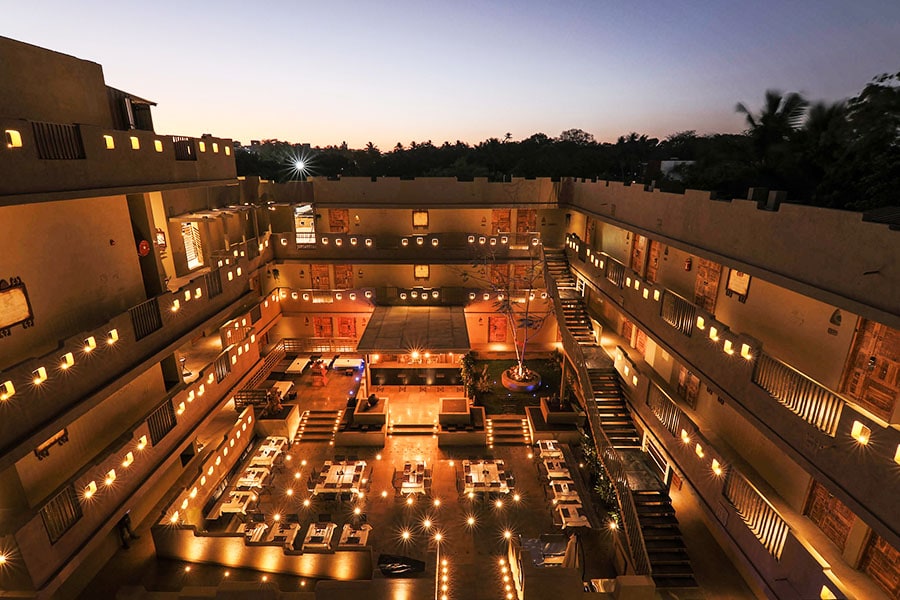 The Great Bath restaurant at 3102bce resort pays homage to the Great Bath of Mohenjo-Daro.
Image: 3102bce
The Great Bath restaurant at 3102bce resort pays homage to the Great Bath of Mohenjo-Daro.
Image: 3102bceLindsay Group owner and director Rahul Bhutoria wanted to bring alive something unique from the past, and concept curator Abhay Mishra, already deep into the subject, knew exactly what he wanted. “I had been researching Vedic civilisations, their architecture, and materials,” Mishra says adding that 3102bce marks the moment of passing on of Lord Krishna and beginning of Kalyug.
“The modern traveller now likes to elevate the experiential with the cerebral,” he says. “We took inspiration from the grids and ratios that existed in those times, used panchbhutam elements, and added levels to create this story of Great Bath in the centre of the resort.”
In 2016, a Chinese company, Penda, too had combined the concept with water mazes for a real estate project in Hyderabad. Inspired by the ‘rare intertwining of function and beauty’ of stepwells, the project’s landscaped gardens have rectangular pools surrounded by steps as tiered planters, and shallow decorative mazes filled with water.
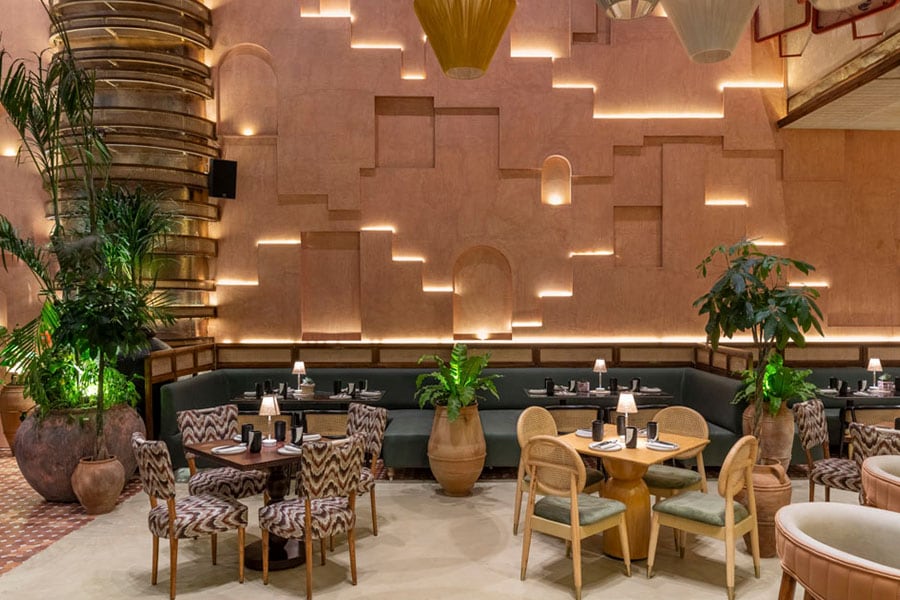 This stepwell-inspired wall is the pièce de résistance at Chef Amninder Sandhu's restaurant, Bawri, in Mumbai BKC.
Image: Bawri
This stepwell-inspired wall is the pièce de résistance at Chef Amninder Sandhu's restaurant, Bawri, in Mumbai BKC.
Image: BawriWhile in Mumbai, Chef Amninder Sandhu opted for an earthen-coloured wall at her restaurant Bawri, which opened in December last year at BKC. “We always wanted to incorporate stepwells in the design as I think it is one of the most signature Indian feature,” she says.
Mixing two prominent features of stepwells, lines and arches, and also the indigenous materials and textures, the wall enlivens the place in the evenings. “In fact, we are thinking about having the stepwell in a more literal sense and grander way at a new Bawri outpost,” the chef adds.
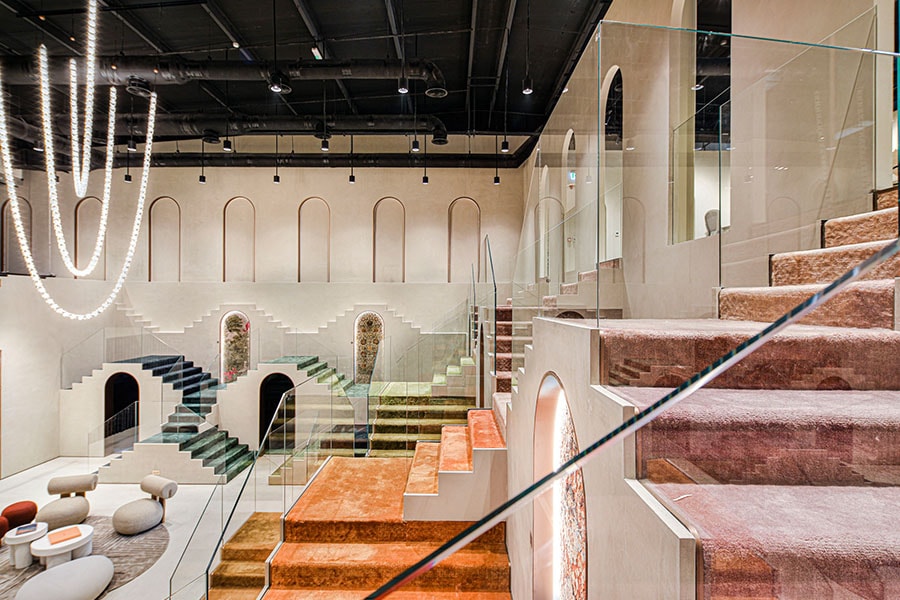 Jaipur Rugs' Dubai outlet, by architect Pallavi Dean, wonderfully blends a traditional architectural concept with a contemporary sensibility.
Image: Jaipur Rugs
Jaipur Rugs' Dubai outlet, by architect Pallavi Dean, wonderfully blends a traditional architectural concept with a contemporary sensibility.
Image: Jaipur RugsFrom India to Dubai and New York
It all started in 2022, when Jaipur Rugs director Yogesh Chaudhary showed architect Pallavi Dean a picture of Chand Baori in Abhaneri. They were envisioning the Jaipur Rugs’ Dubai outlet in 2022 and Dean wondered “if the showroom could be more than just a radiant space”.It was India-born, Dubai-raised Dean’s first visit to the town. One look at the crown jewel of Abhaneri, a few visits to the Jaipur ones, and the artist did not need any other muse.
Yet, integrating an ancient concept in a contemporary setting has challenges. “The challenge was structural,” says Dean. “I was building this layered system of steps from ground to six metres high, and creating a seamless glass detail which kind of channelled into the concrete.” The showroom wasn’t meant to be a mere pastiche either. The experiential alcoves were to add another dimension to it.
Still, the floating steps illusion with clear balustrades wasn’t the biggest task. For, six out of 12 months of the project were spent in getting approvals. “But at the end, all those constraints were very useful in creating something so dramatic,” Dean adds.
And, when this multi-hued ode to stepwells by Dean draws a parallel with MC Escher’s floating stairs from Relativity, she quickly quips, “perhaps he was inspired from our stepwells”.
“The showroom space was beautiful, owing to its height, but we never thought it would end up becoming an architectural attraction,” Chaudhury, a second-generation entrepreneur, says of the outlet which opened in June 2023.
This Indian knowledge of architecture has also travelled all the way to New York to become the driving force behind Hudson Yards’ Vessel, which opened to the public in March 2019. The $150-million monument at the centre of the largest private real estate project ($25 billion) in the US was the brainchild of British designer Thomas Heatherwick.
As shared by Heatherwick Studio, they started with ‘looking at the places where people naturally congregate, the underlying infrastructure often being a staircase, like the Spanish Steps in Rome’. They then explored India’s stepwells. ‘However, the studio wanted to create an experience that was outward as well as inward-looking.’
Thus, the 50-foot Vessel, with its 2,500 steps, 154 interconnected flight of stairs, and 80 viewing landings, was added to the city’s skyline.
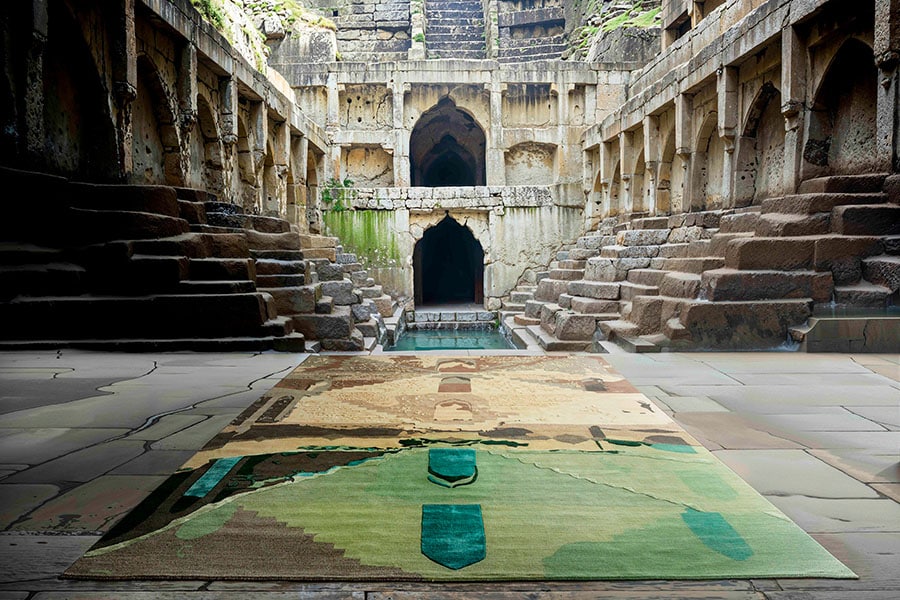 Interior designer Shalini Misra's Ujala Baoli rug in an artistic representation against the stepwell ( in Mandu, Madhya Pradesh) by the same name that inspired its design.
Image: Robert Shinn
Interior designer Shalini Misra's Ujala Baoli rug in an artistic representation against the stepwell ( in Mandu, Madhya Pradesh) by the same name that inspired its design.
Image: Robert ShinnBuildings and beyond
“I think there is a general refocus on the relationship between the past, present and future in many areas,” London-based interior designer Shalini Misra says. She made her debut in the rug world this year by tapping into a memory of yore to produce three luxury rugs, in collaboration with Italian rugmaker cc-tapis, all inspired by stepwells.Misra’s rugs are simply and aptly named after the stepwells that inspired their designs—Ujala Baoli, Adalaj ni Vav, and Rani ki Vav. They not only bring the rich narrative of stepwells to life, but the hand-knotted rugs, made from cotton weave, Himalayan wool, and silk pile, also stay true to the traditional architectural references and colour palette of the stepwells. They are priced £5,400 onwards, with the UNESCO fame and 100-rupee note star, Rani ki Vav, at ₹10 lakh-plus.
Notwithstanding the likely architectural fascination, for Misra and fellow Delhi School of Architecture and Planning students, “a nearby stepwell became a calming space where we felt connected to one another and to the structure itself” in the late 1980s. “This collection is an example of how design can reimagine the past, communicating it in new ways to reach new audiences,” she says.
Titan Zoya’s Samave collection in 2021 was also one such attempt. From the arid lands of India, the stepwells transformed into chic diamonds, and a patented ‘Zoya Baoli’ setting. While those geometric pieces were whimsically called ‘the light between waters’, ‘steps of serenity’, ‘periapt of solace’, and more.
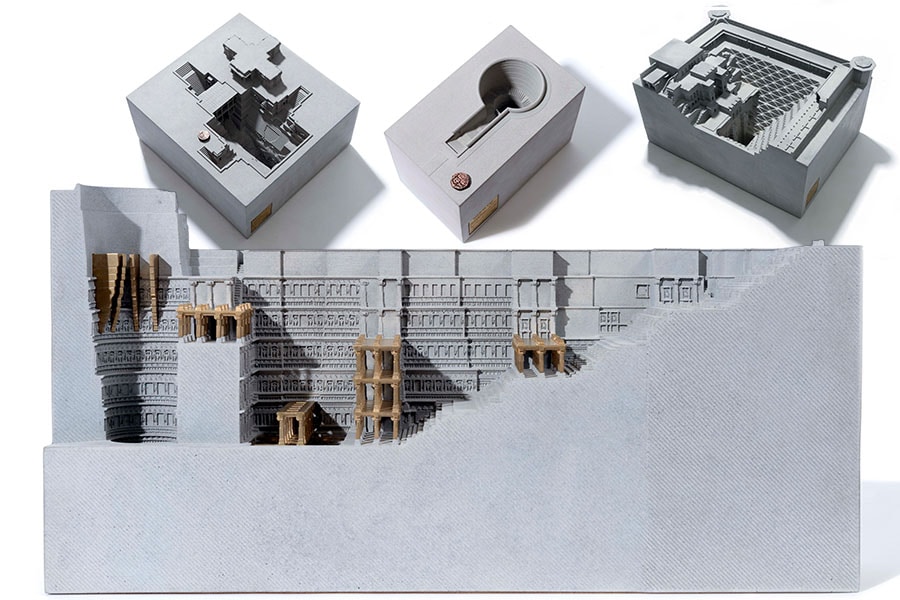 Architect-designer Nitin Barchha spent five years in studying almost 30 stepwells of India. He then chose nine for their architectural variations and exhibited the dance of light and shadows through his miniature scale artistic models.
Image: Sameer Tawde
Architect-designer Nitin Barchha spent five years in studying almost 30 stepwells of India. He then chose nine for their architectural variations and exhibited the dance of light and shadows through his miniature scale artistic models.
Image: Sameer Tawde It is also exactly why, when architect-designer Nitin Barchha modelled nine stepwells from across the country for his Sanctum series, he was not merely making miniaturised wonders in concrete but elevating the sensory connection and experience by studying and replicating “the movement of light and shadows in them”.
Barchha also went through the cycle of investing around five years in studying almost 30 stepwells, selecting nine, visiting and revisiting them, and making the moulds and casts again and again for paying his own homage to these cradles of humanity. He “found stepwells already modernistic in nature. Barring a few, most of them are stark and spartan. The form here is more important than decoration,” he says. A purist’s delight.
Through this Sanctum series of miniature scale artistic models, and a subsequent show and exhibition in Mumbai – A Place in the Shadows, held in September-October 2023 at Chatterjee and Lal Design’s Gallery 47-A, Barchha captured light and shadows’ ethereal and ephemeral interaction with stepwells. Some of these stepwell models were on display at India Design ID too in the capital this February.
“The possibilities of types of shadows on flat surfaces or walls are limited,” he adds. “The minute there are steps, the texture of shadows changes; you have these beautiful distinct three-dimensional shadows, and changing shades and colours.” The whole theatre!
And the story is just starting. As Dean puts it, the world might see more of this “back to the basics with balance, motion, symmetry, scale, and rhythm. People are craving craftsmanship; they’re craving expressionism.”
It seems the current take on the baoris of India might just have been a step well timed.
